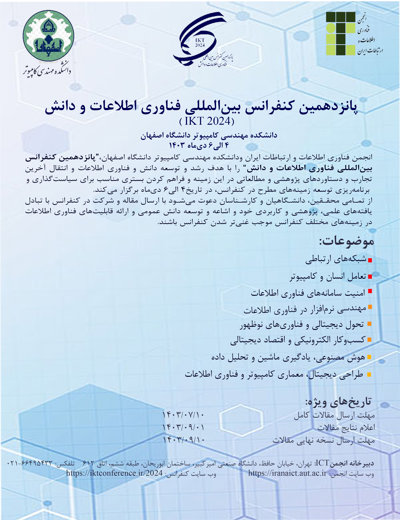0% Complete

نویسندگان :
کلمات کلیدی :
چکیده :
لیست مقالات بایگانی شده
محمدرضا رفیعی نژاد - محمدرضا بینش مروستی - سید امیر اصغری
دکتر آرش خسروی - سیده فاطمه حسینی - دکتر مرتضی رجب زاده آرش خسروی - سیده فاطمه حسینی - مرتضی رجب زاده -
Seyed Mehdi Mohtavipour - Hadi Shahriar Shahhoseini
Maede Esmaeili - Faria Nassiri-Mofakham - Fatemeh Hassanvand
فهیمه شاهرخ شهرکی - رسول سامانی - دکتر ناصر قدیری فهیمه شاهرخ شهرکی - رسول سامانی - ناصر قدیری -
Parsa Bakhtiari - Hassan Bashiri - Alireza Khalilipour - Masoud Nasiripour - Moharram Challenger
Maryam Taheri - Mohammad Reza Keyvanpour - Mohadeseh Saadat Mousavi
Safiyeh Samadanian - Marjan Kaedi
فاطمه رمضانی خوزستانی - مجید رفیعی
مسلم سمیعی پاقلعه - مهرنوش شمس فرد





